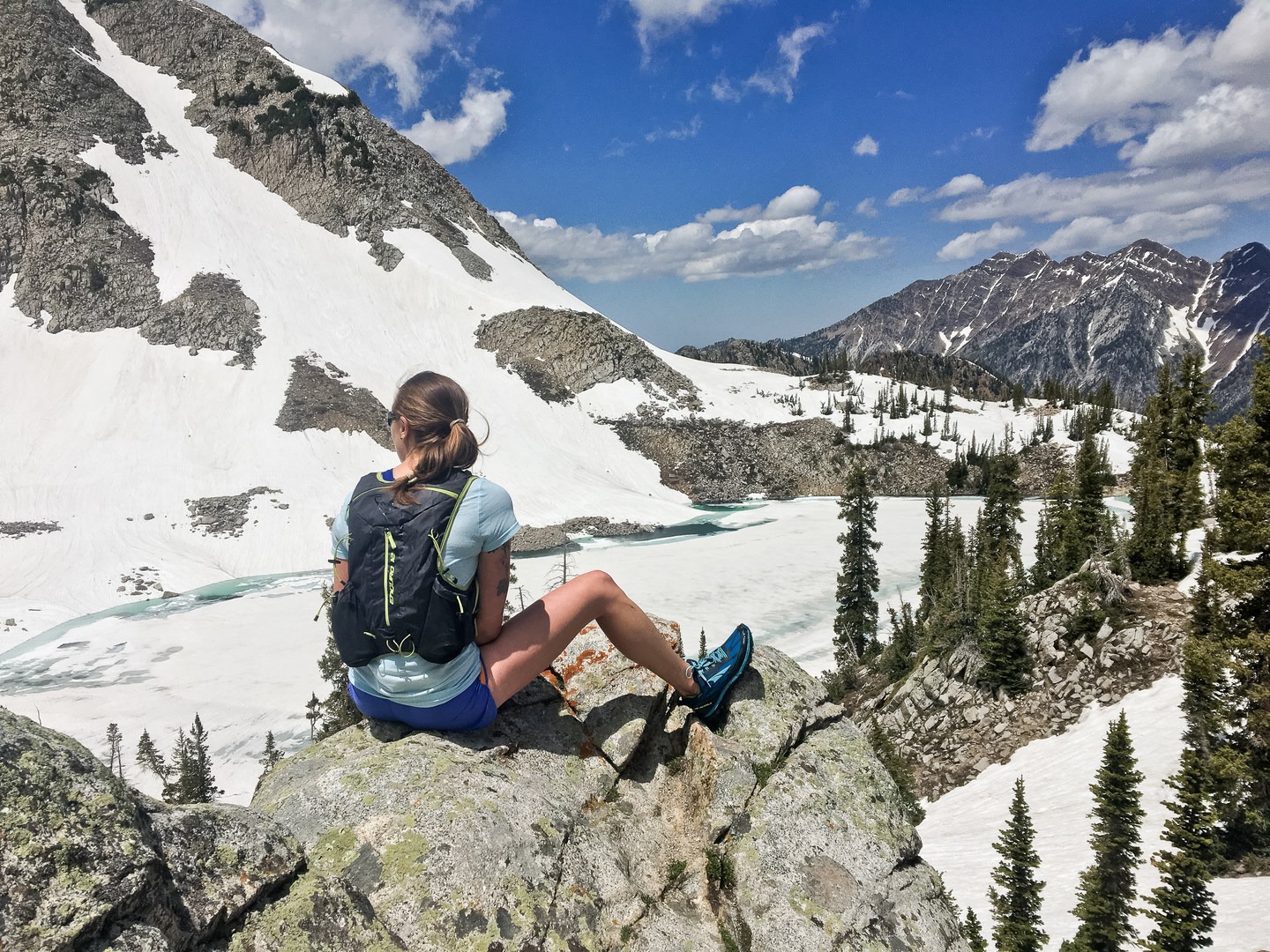You are here
This piece was written by Evolution athlete and adventurer, Corie Townsend. Scroll to the bottom to learn more about Corie and follow along on her adventures!
I was 24 when I ran my first 5k. I spent the months leading up to the race training my body to "run" and was ecstatic when I crossed the finish line in 26:05. I’d never really considered myself a runner before that moment. I’d dabbled a bit in college (I think it’s an unspoken requirement to attending the University of Oregon that you run at least recreationally) and had run off and on in high school, but I’d never run for any real reason or with any goal in mind. But running was suddenly fun, and it fed my competitive spirit. With a 5k under my belt, I decided to sign up for a half-marathon with some friends and began researching training programs. I wanted to run my first one in good style and with a solid foundation under my belt. That’s when the downward spiral began.
I read things like “you will gain two to three seconds per mile for every pound lost,” “each additional pound of body mass puts four extra pounds of stress on your knees,” and so on and so forth. I became obsessed with getting lighter and cycling my caloric intake with my running program. I could eat less on the days I didn’t run for very long, and I would eat as little as possible after every hour I spent pounding pavement to maximize the fat-burning power of my revved-up metabolism. I weighed myself three days a week and religiously recorded everything I ate in a food diary. As the pounds dropped, so did my mile time, and so did my bra/pant/shirt size. I felt fast and I looked fast and my cyclical eating strategy was doing its job. I ignored comments from my friends and my family. I ignored the gentle touches to my clavicles and the “are you sure you’ve eaten enough?” questioning. I looked great - I looked like what I thought a runner should look like. And, my strength in the climbing gym was skyrocketing with my increased strength-to-weight ratio. I felt better than I had in years and was excited to continue my progression as an athlete. I would go out for beers after the climbing gym, but I would make sure I only drank on the days I ran and would count those calories in my food diary. My social life wasn’t worth the weight gain.
Then, in 2014, I hiked up South Sister with my boyfriend and a friend and decided, impulsively, that I wanted to start climbing mountains in my spare time. Over the course of the next year, I discovered that my restrictive, cyclical dieting and my obsession with calories-in/calories-out weren’t going to cut it in the mountains. I bonked often. I took too many breaks. I couldn’t problem-solve swiftly or while on the move. I was a dangerous partner on long days, and I didn’t trust myself to be safe during a long descent when I hadn’t eaten enough during the day.
And, to add insult to injury, my body was breaking down rather than rebuilding itself during the week because I wasn’t consuming enough calories (or enough of the right calories) to recover effectively. I wasn’t getting stronger with the more hours I spent gallivanting around in the alpine, and I started asking myself why. I began reading more about proper nutrition for big, long days at elevation, and on the links between fuel and brain power. I started packing snacks that not only packed the most nutritional value I could cram into a stuff sack, but also ones that contained the most calories by weight. Olive oil mixed into that mashed avocado? Hell yeah! Peanut butter in droves? Absolutely!
Being light stopped mattering so much, and I started spending more time focusing on how I could go from sunrise to sunset without running out of energy. I began turning my energy from calorie restriction to calorie surplus. Protein shakes evolved from a scoop of protein and water (gross!) to protein powder, nut butter, frozen fruit, coconut fat, and a scoop of cacao nibs. I ate before every workout so I could finish the workout, and I ate after every workout so I could reap the benefits of the time I spent sweating in the gym. And, I ate on the days I did nothing but gently stretch on my living room floor.
Not quite two years after that initial hike up South Sister, I stood on top of my 20th volcano with my amazing partner and boyfriend. In the year since then, my love of the mountains has seen me up pitches of ice and rock and through some of the more challenging routes in the Cascades. I’ve eaten my way through 20 hours of climbing and through 20 hours of driving home. Spending hours of my life moving in the mountains has given me a greater sense of not only who I am but of what I should feel like. And I should never feel hungry. I should feel strong and ready for whatever conditions a peak can throw at me, a strength that can only come through a good training program, ample recovery time, and plenty of good food. Stereotypes be damned!
ABOUT THE AUTHOR: Corie Townsend works full-time as a writer. She believes in the power of snacking and in the necessity of not taking one's self too seriously. A lifelong resident of the Pacific Northwest, Corie enjoys riding her horses, running around in circles, skiing in less-than-stellar conditions, choss'aineering, and, occasionally, walking up a big snowy hill.





Comments
Sign In and share them.